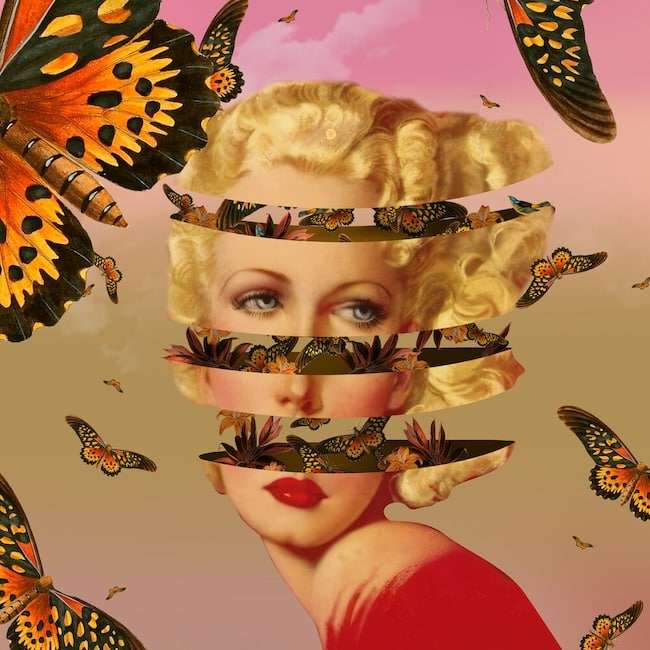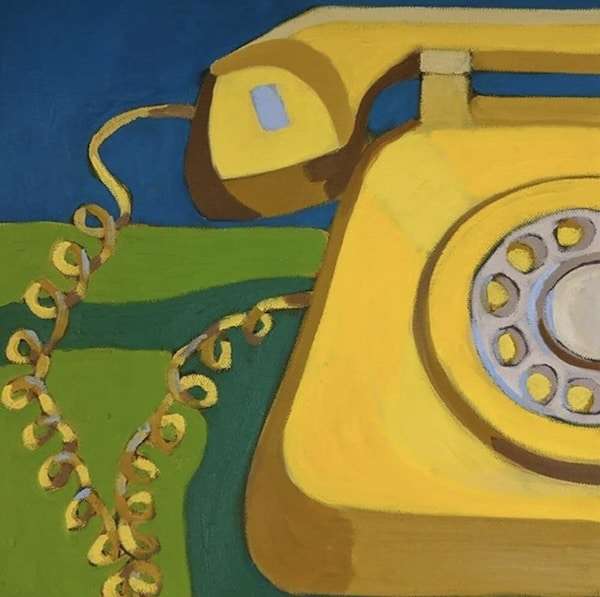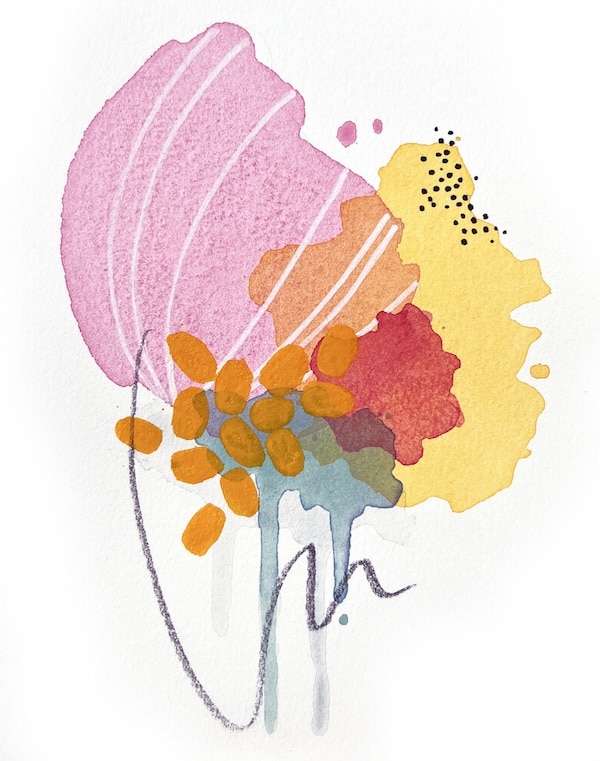We talk a lot about the benefits of relying on art to establish strong brands and foster customer relationships, but did you know that its influence goes much deeper than that? The psychology behind harnessing the power of art to influence customers also plays a powerful role for the folks behind the scenes: your trusted employees. And when you have a team that strives to give you their all, you need to take steps to create a healthy environment that encourages productivity and, more importantly, prioritizes their wellness.
Wellness and mental health are increasingly buzzy concepts in multiple areas of our lives, but perhaps none are as important as in the workplace. As the writer Annie Dillard once said, “How we spend our days is, of course, how we spend our lives,” and with the average person spending 90,000 hours at work during their lifetime – that’s about one third – it’s abundantly clear that our jobs have a huge impact on our quality of living. Ultimately, this means that investing in a healthy and productive workplace is critical for employers and employees alike. But how can we do that effectively? We think the answer is an unexpected one: with art.
But let’s look beyond the obvious: it’s not just about making a space more attractive. In fact, there’s fascinating evidence that makes a strong correlation between art, employee wellness, and productivity.

Great art possesses the power to rejuvenate the soul and unlock unseen potential.
Art Affects Brain Activity
At John Hopkins University, groundbreaking work is being conducted in this field. In fact, their International Art + Mind Lab has found compelling evidence that suggests that, because the brain is so agile, arts exposure of all kinds influences brain interconnectivity and triggers hundreds of billions of neurons, which ultimately impacts how we process and perceive information. And since our brains are so intertwined with reward systems, motor activities, perception, and the senses, it comes as no surprise that art has an ability to stimulate us in ways that are totally unsurpassed.
In fact, art specifically stimulates the brain to make sense of visual stimuli. Per Monica Kapur, professional art therapist, “Art stimulates the brain to make sense of the visual information it is receiving. Professor Semir Zeki, chair in neuroaesthetics at University College London, found that when people were exposed to a series of paintings there is a strong activity in the brain related [sic]. “The blood flow increases for a beautiful painting just as it increases when you look at somebody you love. It tells us art induces a feel-good sensation directly in the brain.”
Art releases feel good chemicals like dopamine and oxytocin while actively reducing cortisol levels – a fact which suggests, interestingly, that art itself is a drug. And if you think back to how you’ve felt after a night of dancing or an afternoon doodling or crafting, you likely remember how relaxed you felt. That is, ultimately, because our relationship with art is intuitive – art is hard wired.
Art Encourages Connections and Community
Imagine it: a drab, all-white workspace suddenly transforms into a thoughtful curation that gets all of those underused neurons firing. Is there anything better to bring people together? But in addition to these unique individual responses, there’s something larger that happens to the collective: art becomes a talking point and encourages conversation. And when you encourage conversation, you facilitate better camaraderie – which then evolves into more competent communication and, ultimately, problem solving.

Feeling a sense of camaraderie while working towards a common goal creates a healthier, more productive atmosphere. Edward Bock, “Cross Talk” (2013)_.
Art Therapy Reduces Stress
Multiple research studies have shown that just one art therapy session has the ability to reduce cortisol levels, otherwise known as the “stress hormone”. But we like to think that this forward-thinking approach has even bigger implications: what happens when a group is able to share in this experience? Art therapy can be considered a preventative measure to help negotiate stressful situations, difficult relationships, and manage anxiety – all while bringing employees together and, ideally, fostering a safe and healthy environment.
Art Activities Help with Information Recall
What if art can actually help focus and, in turn, information recall? According to a 2009 study in the Journal of Applied Cognitive Psychology, “subjects given a doodling task while listening to a dull phone message had a 29 percent improved recall compared to their non-doodling counterparts”. While these findings may not apply to certain situations – doodling would be a bad look during an important client meeting or interview – it’s an interesting tidbit that we should keep in our back pocket. Perhaps making art helps us keep our cool and focuses the brain.

Art appreciation and creation have the ability to help us focus and take it all in.
Making Art Work for You
Most companies have to be thoughtful about their resources, and it may seem like an insurmountable task to figure out how to make art work for their business. But we truly believe that, with a little ingenuity and thoughtfulness, it’s both achievable and worth the effort.
Get Employees Involved
Affordability is often a major concern, which is entirely reasonable. But what if there was a way to get employees actively involved? One option could be to have an art exhibit of pieces created by your own employees. Nothing is off the table: often the “worst” pieces are the one that spark the most conversation and inspire a few laughs. And it’s important to remember that we all have active lives outside of the office. Let Joanne show off her macrame! Invite Philip to share the photographs he lovingly develops on the weekends. Officemates will appreciate the camaraderie and the newly beautified space that speaks to them personally while celebrating their other talents.
Focus on Colorful, Serene Curations
We’ve discussed this previously (and invite you to learn more), but it’s been scientifically supported that certain colors possess the ability to affect our moods and energy levels. In fact, the University of Texas conducted a study that confirmed color actually does elicit specific reactions in the brain, which means that it can influence mood and, ultimately, our output. White, it was identified, is actually the worst choice: white walls often feel sterile, cold, and stifling. So unless your business is a literal scientific laboratory or operating room, focus on the colors that inspire and invigorate.

Investing in bright canvases signals brighter days ahead.
Don’t Hesitate to Consult the Experts
There are so many passionate companies and independent curators that are eager to make life in the office a more pleasant experience – don’t neglect them! Artrepreneur regularly releases great content to help educate and inspire (so happy you’re here, by the way), like this article specifically tailored to selecting fantastic works for the office. We also pride ourselves on our commitment to taking on projects both large and small: whether you’re interested in commissioning a 10 foot bronze sculpture or sourcing ready-to-print artworks that have been thoroughly vetted by our team of professionals, we’re here to point you in the right direction.
Team Building and Conflict Management
Immersive activities involving art have the power to facilitate collaboration and can help teams get to the heart of a problem in a more productive way. It may feel “woo woo,” but encouraging employees to collaborate on an art project is a great way to build connections: it effectively teaches team members which communication methods are working, and which aren’t. It can also help individuals understand how specific situations can be interpreted differently, which is critical when you’re trying to navigate through a tricky situation.
At the end of the day, there’s one thing we can promise you: investing in art and implementing unique art therapy approaches in business has a profound ability to make everyone’s lives just a little bit easier. And in the chaotic whirlwind that so many of us experience day to day, isn’t that the most important thing?
